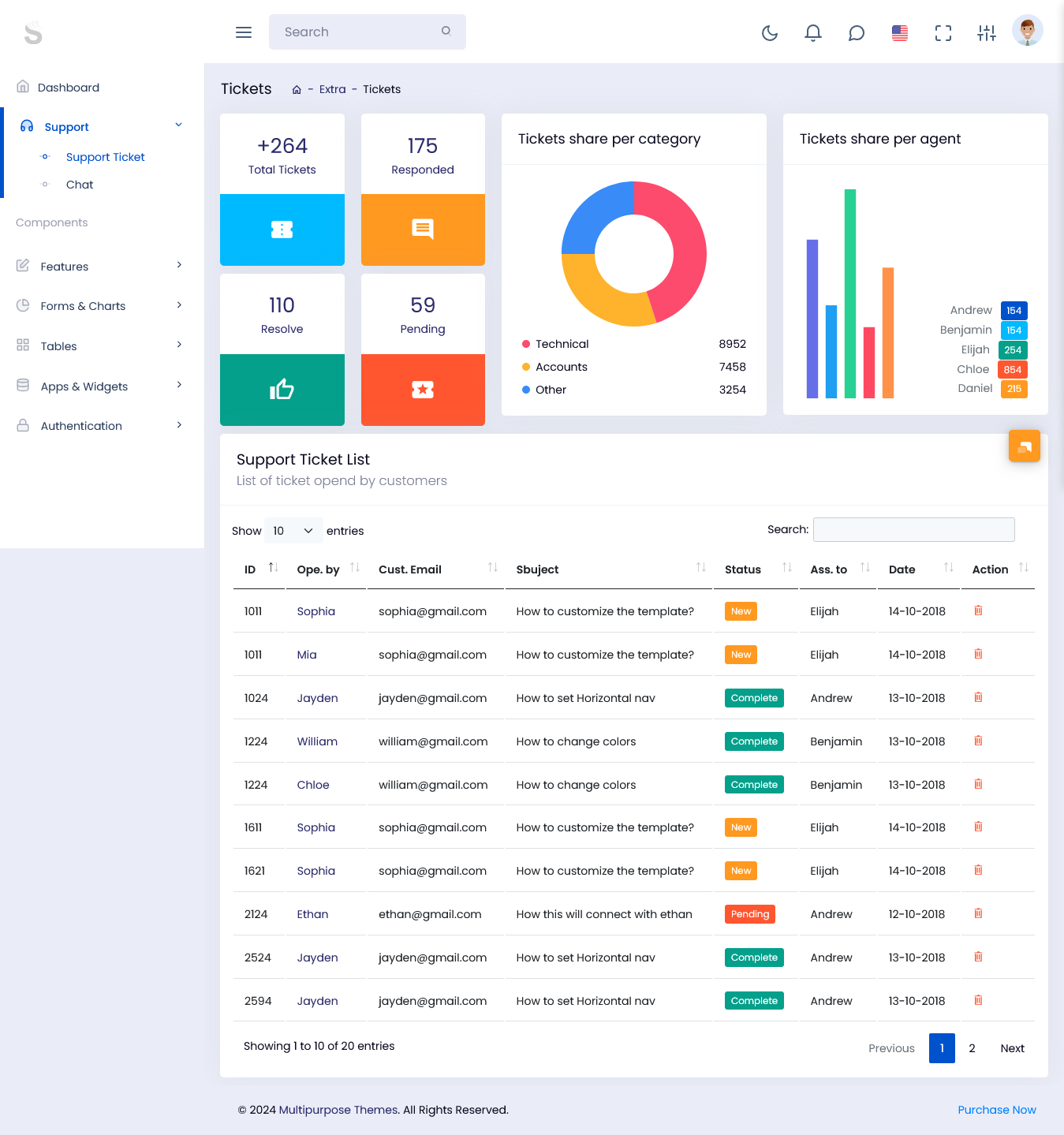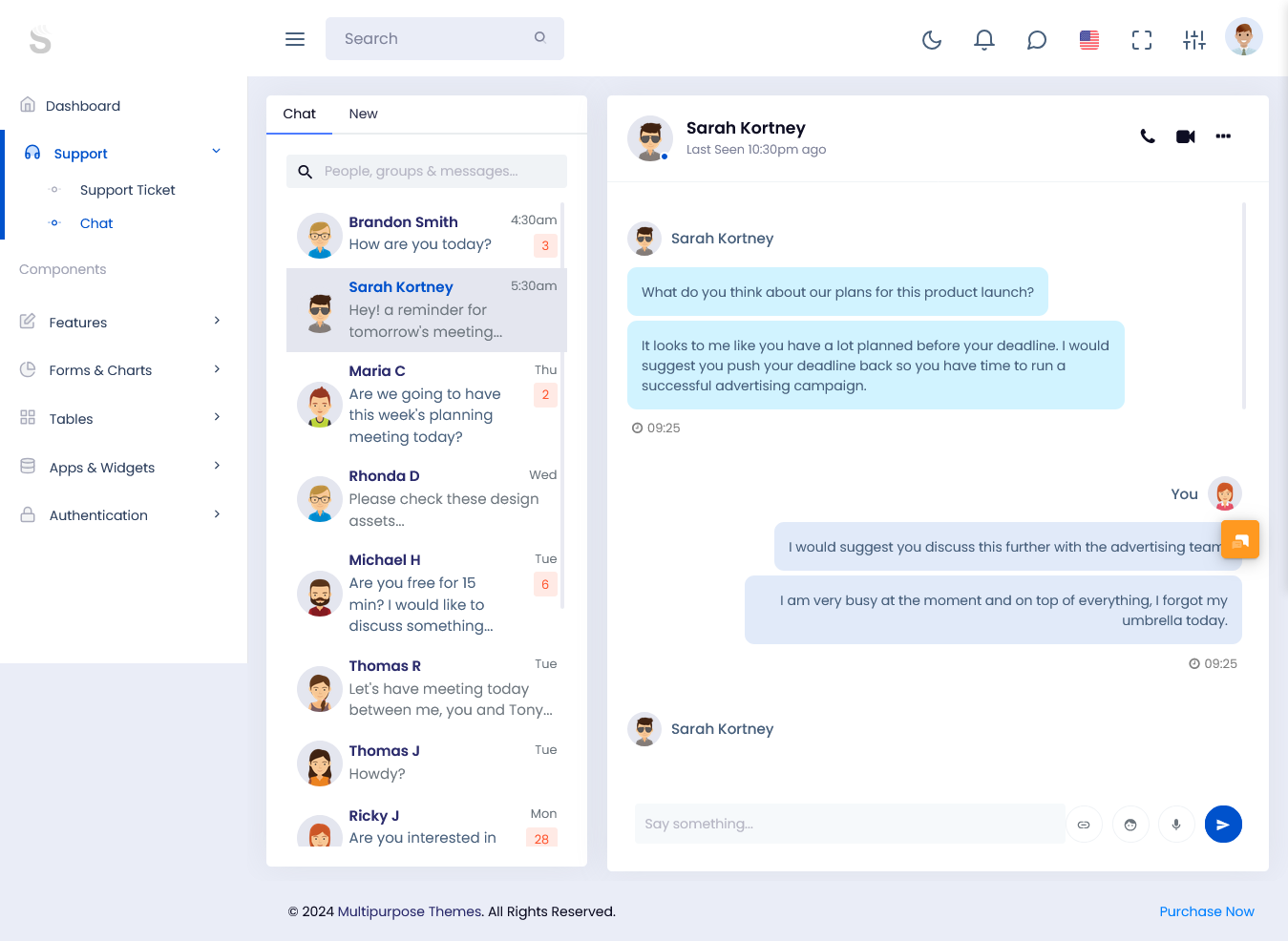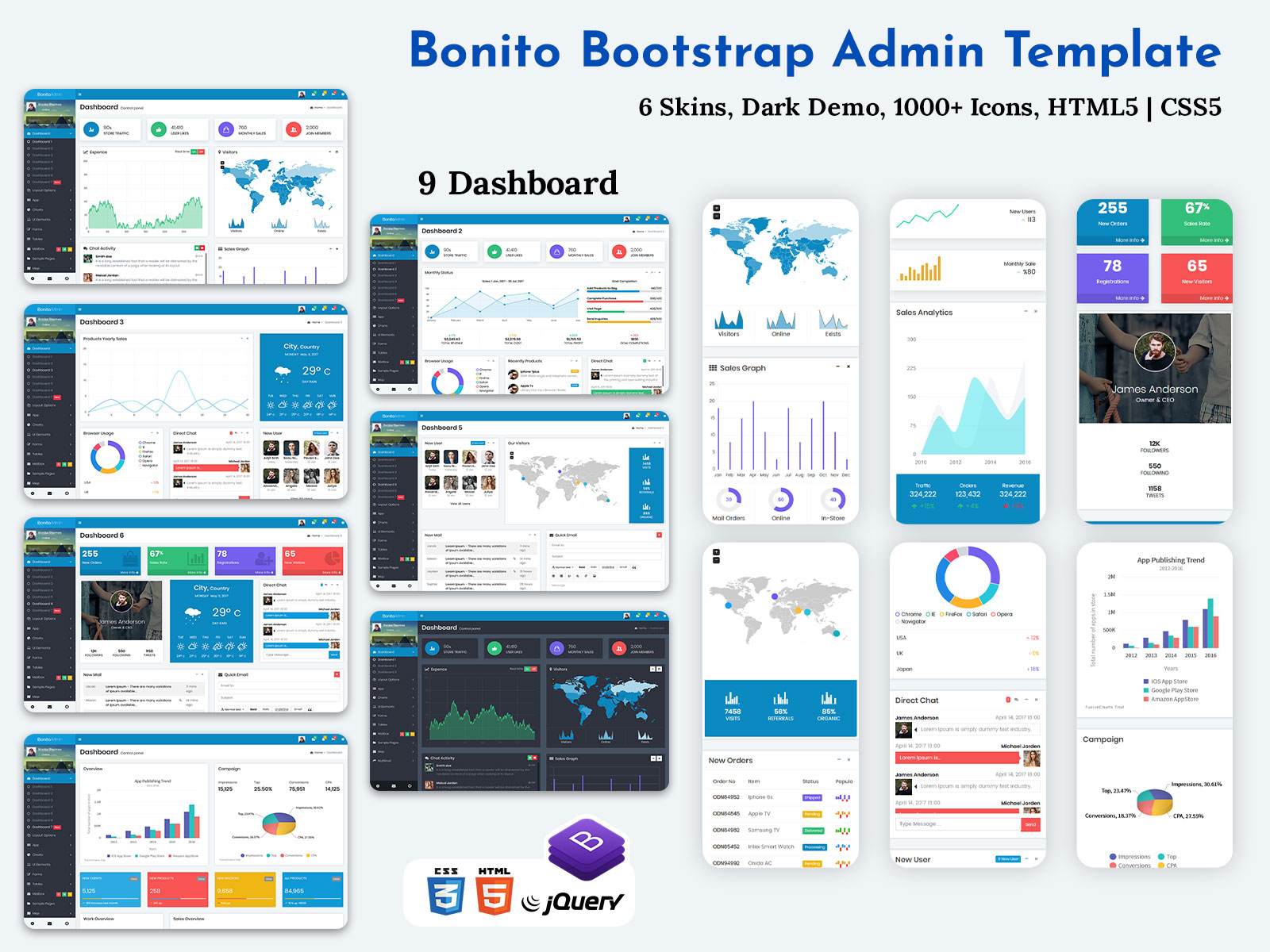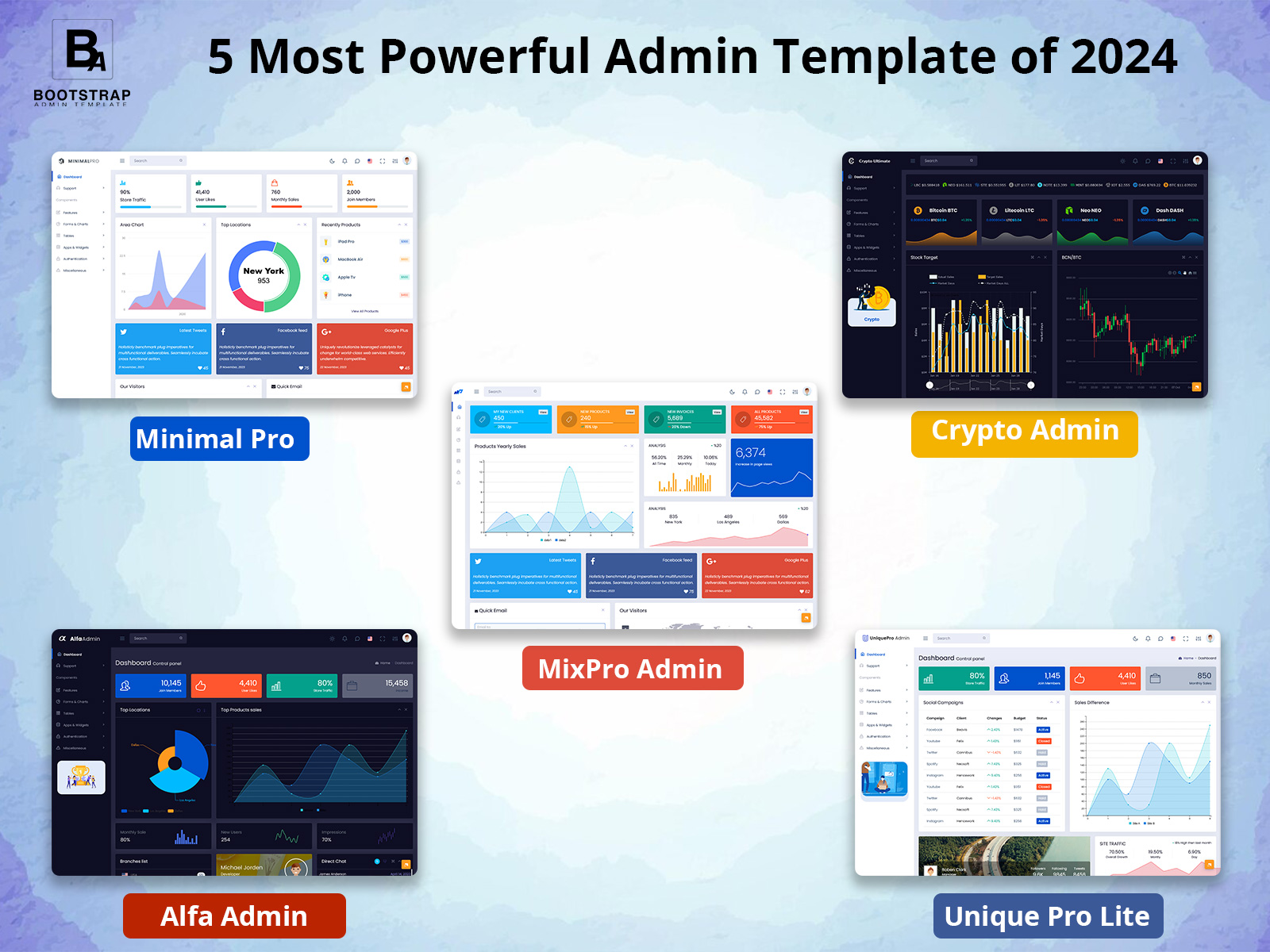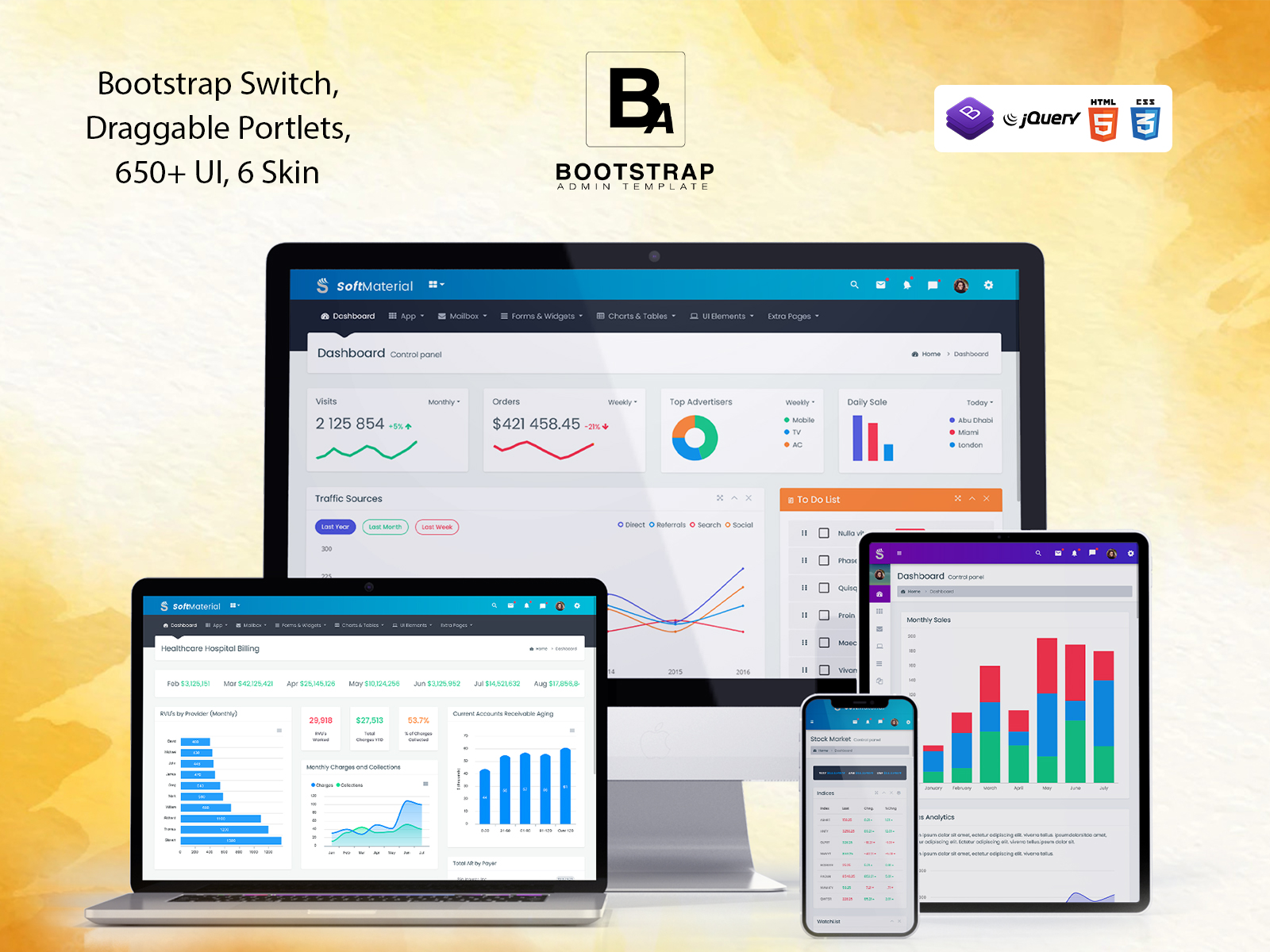
How to use Dashboard Template for immediate decision making
In today’s fast-paced business environment, timely and informed decision-making is critical to success. A powerful tool that can significantly enhance decision-making is the dashboard. A dashboard template shows important data clearly, helping organizations make quick and smart decisions. In this post, we will explore how to use the Admin Template effectively, focusing specifically on key features such as Visits, Orders, Advertisers, Daily Sales, Traffic Sources, Branch List, Website Traffic and Task Manager.
BUY NOW
Soft Material
Understanding Dashboards
A dashboard template is a visual tool that shows important data and key performance indicators (KPIs) all in one place. It collects information from different sources, helping users see how things are going, spot trends, and find areas that need improvement. This quick access to important information helps businesses make smart, data-driven decisions fast.
Dashboards of Soft Material
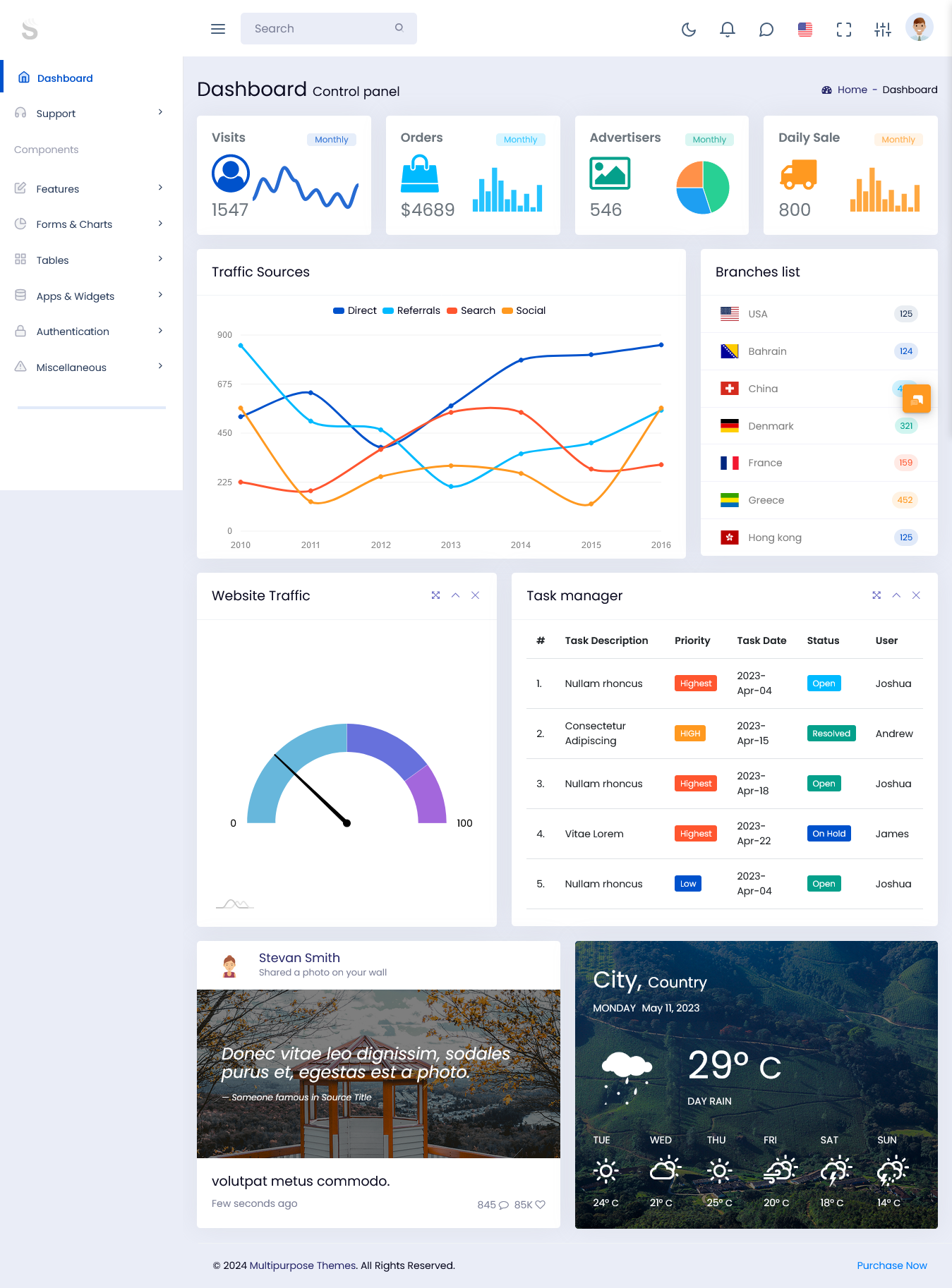
MORE INFO / BUY NOW DEMO
Pages of Soft Material
Support Ticket Page
MORE INFO / BUY NOW DEMO
Chat Page
MORE INFO / BUY NOW DEMO
Key features of an effective Admin Template
-
Visits
Visit tracking is essential to understand customer engagement and interest. An Admin Template can display the number of visits to your website or specific product pages. By analyzing this data, businesses can identify popular content, assess marketing effectiveness, and adjust strategies accordingly. For instance, if a particular product page is receiving significantly more visits than others, it may indicate a potential area for increased marketing efforts or inventory adjustments.
-
Order
The order feature on the Bootstrap Admin Template provides Immediate information of sales performance. Monitoring the number of orders can help businesses assess whether they are meeting sales goals and identify trends over time. For example, a sudden increase in orders may indicate the effectiveness of a successful marketing campaign or promotional offer. Conversely, a drop in orders may signal the need for an immediate investigation into customer satisfaction or market conditions.
-
Advertisers
For businesses that rely on ads for revenue, tracking advertiser performance is critical. Bootstrap Admin Template can provide information on which advertisers are driving traffic and sales. By analyzing this data, businesses can optimize advertising strategies, allocate budgets more effectively, and identify potential new partnerships. Understanding the performance of different advertisers allows businesses to focus on those that deliver the best results.
-
Daily sales
Daily sales data is critical to understanding business performance. Admin Template can present daily sales figures, allowing businesses to quickly assess their revenue streams. This feature is particularly useful for identifying trends such as seasonal fluctuations or the impact of certain promotions. By closely monitoring daily sales, businesses can make real-time decisions about inventory management, staffing and marketing efforts.
-
Traffic Sources
Understanding where your website traffic is coming from is essential to optimizing marketing strategies. The Traffic Sources feature on the Dashboard Template shows the different channels driving visitors to your site, such as organic search, social media, or paid advertising. Analyzing this data enables businesses to focus their efforts on the most effective channels. For example, if a particular social media platform is driving significant traffic, it may warrant an additional investment in creating content or advertising on that platform.
-
List of branches
For businesses with multiple locations, tracking performance by branch is a must. A dashboard can provide a list of branches with key metrics, allowing for quick comparisons. This feature helps identify which locations are performing well and which may need additional support. By analyzing branch performance, businesses can implement targeted strategies, such as customized marketing campaigns or additional training for staff at underperforming locations.
-
Website Traffic
Website traffic is an important measure for any online business. Dashboards can provide insights into overall website performance, including unique visitors, page views, and bounce rates. By monitoring these metrics, businesses can evaluate the effectiveness of their online presence. For example, a high bounce rate may indicate that visitors are not finding what they are looking for, prompting a review of website content or user experience.
-
Task Manager
Integrating a task manager into your dashboard can streamline operations and increase productivity. The task manager feature allows teams to track ongoing projects, assign responsibilities and monitor deadlines. By having a clear overview of tasks, businesses can ensure that everyone is aligned and projects stay on track. This level of organization is essential for timely decision-making, as it provides clarity on what needs to be prioritized.
Leverage dashboards for immediate decision making
To increase the effectiveness of dashboards in decision making, consider the following steps:
-
Define key metrics
Identify the key metrics that are most relevant to your business goals. Focus on those that directly impact decision-making and align with your overall strategy. This will help you create an admin template that provides the most valuable insights.
-
Customize your dashboard
Customize your admin template to meet the specific needs of your business and stakeholders. Customize layouts, visualizations, and features to ensure information is easily accessible and understandable. Well-organized dashboards allow users to quickly find the data they need to make immediate decisions.
-
Update data regularly
Make sure your Dashboard Template is regularly updated with the latest data. Real-time insights are critical for making timely decisions. Automatic data updates can help keep your dashboard current without the need for manual intervention.
-
Encourage team collaboration
Foster collaboration among team members by sharing dashboard access. This allows everyone to see the same data and contribute to discussions based on the insights provided. A collaborative approach fosters a culture of data-driven decision-making.
-
Analyze trends and patterns
Use your dashboard not only for immediate decision-making but also for long-term strategic planning. Regularly analyze trends and patterns to gain insights into customer behavior, market changes and business performance. This proactive approach can inform future decisions and strategies.
conclusion
Dashboard Template is powerful tools that can enhance immediate decision-making by providing a visual overview of essential metrics. By effectively using features like Visits, Orders, Advertisers, Daily Sales, Traffic Sources, Branch List, Website Traffic and Task Manager, businesses can quickly respond to changing conditions and capitalize on opportunities. Embracing dashboards as part of your decision-making process can lead to more informed choices and, ultimately, greater success in today’s competitive landscape.

